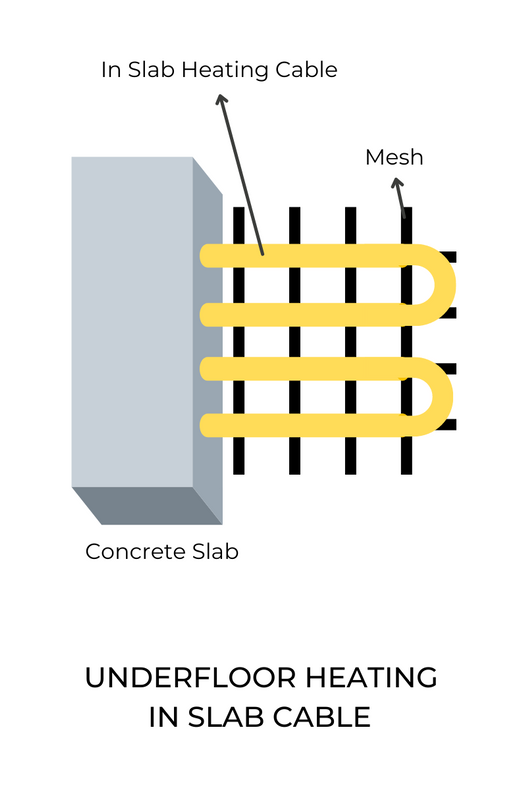If you are looking at installing underfloor heating, there are a few things that would be helpful to know when making a decision. We will answer some of the biggest questions here to inform you on which underfloor heating is best for you.
Let’s start with, are you renovating or building a new home?
RENOVATING?
If you answered yes to renovating then let’s take a look at retrofitting floor heating options.
There are two types of floor heating: Hydronic (where your floors are warmed by water running through pipes under your floor) and Electric (underfloor heating using electricity).
When renovating the best and most affordable option is electric floor heating mats.
An Electric heat mat is a product that is made up of a thermostat, power cable, heat trace wire and sticky positioning mesh. They are thin, easy to install mats adding no significant height to your floor levels. Electricity is used to power the heat trace wire which warms your floor.
There is an extensive range of electric floor heating systems and the type of floor you are heating requires the right heating system choice as every floor is made of different materials and each has its unique method of installation.
For example, tile floors in bathrooms need to be paired with a heating system suitable for fixing to the floor with the least chance of damaging the waterproof membrane at the same being of a design with the correct heat output to heat the floor and room with extensive cold surfaces. On the other hand, tile floors in living rooms and bedrooms with softer finishes require a heating system suitable for this application. If you want to know the best electric floor system for your type of flooring click here.
What about the Hydronic floor heating system when it comes to renovating?
Hydronic floor heating is possible to be put into an existing home, depending on the configuration of your home. The best solution is to get a professional installer to come and assess your home for its suitability for a retrofit. They’ll be checking where they can access the pipework and if there is sufficient crawl space under your home, you may be able to install the heating pipes to the floor’s underside. Your installer may need to access under the house, or access pipework via the ceiling and walls.
BUILDING A NEW HOME?
With building a new home the question becomes which underfloor heating floor you would prefer. So it is really up to you if you would like an Electric or Hydronic (water) underfloor system.
The main advantage of hydronic systems is that they generally deliver more heat at a lower operating cost than electric systems. That’s why hydronic heat is usually a better option than electric systems to heat large floor areas or even an entire house. Although they are cheaper to run, the cost of installing Hydronic is higher than an electric system.
Electric systems are easier and cheaper to install than Hydronic. Electric underfloor heating is available in the form of basic heating cables, sometimes loosely woven into mesh mats, flat or ribbon cables, or heating films. The mats or rolls are spread out, connected and are then linked up to the thermostat and mains power supply. Your flooring is then laid on top.
Electric mats or cables can mostly be done as a DIY. You will need a licensed electrician to install the conduit.
Hydronic underfloor heating is a more complex system and needs a specialist to install.
ELECTRIC
If you would like to find out what electric mat or in screed cable is best for your floors click here. https://www.fhkheating.com.au/find-the-floor-heating-you-need/
HYDRONIC
For Hydronic specialists we recommend: https://www.amuheat.com.au
If you are still unsure which underfloor heating is best for you electric vs. water, feel free to contact us on (02) 9114 6934 and our team would be happy to help answer any questions.

